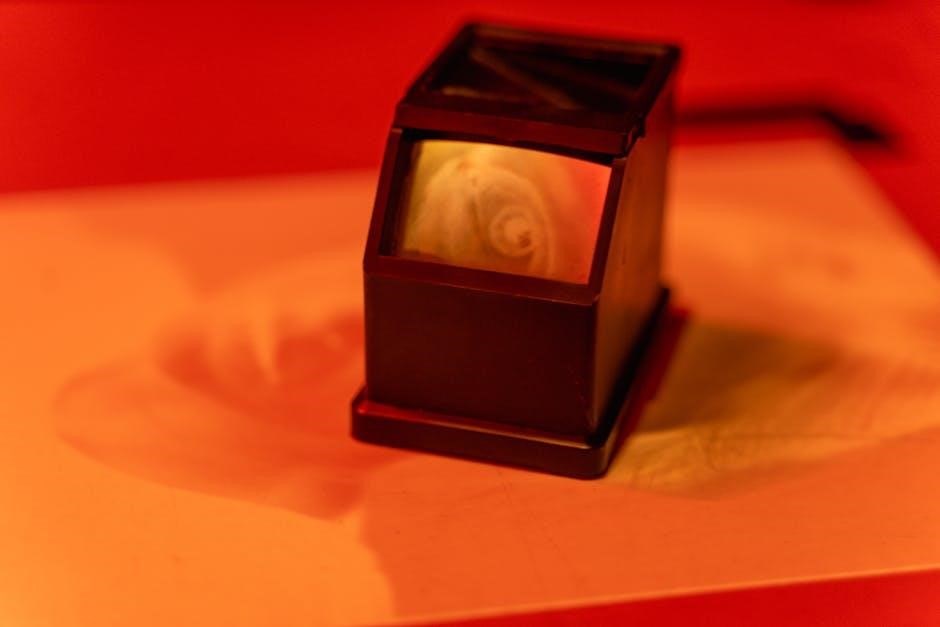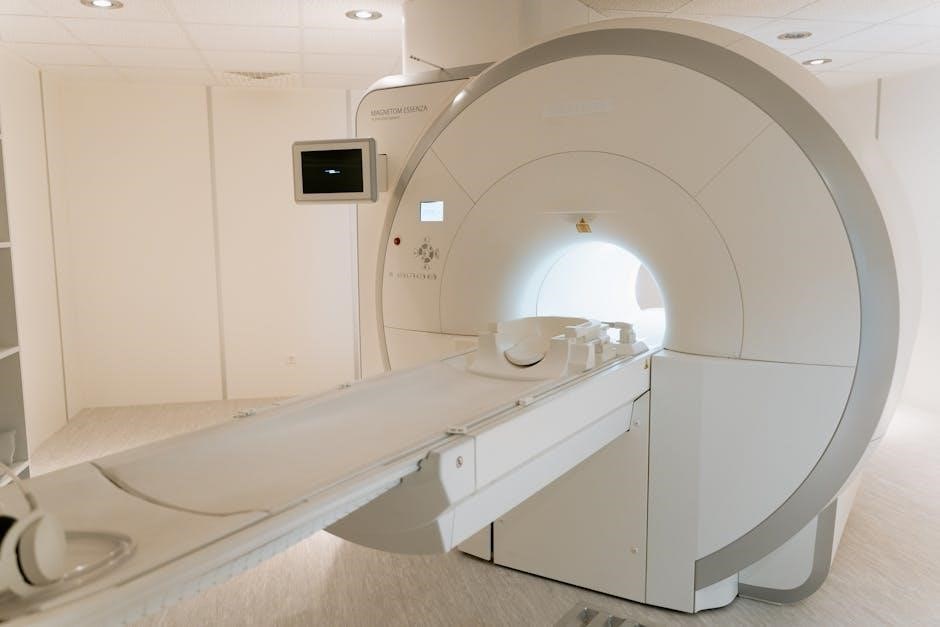
NASCAR scanner frequencies enable fans to listen to real-time driver and team communications, enhancing race-day excitement. These frequencies are regularly updated for accuracy and accessibility, ensuring enthusiasts stay connected to the action.
1.1 Overview of NASCAR Scanner Frequencies
NASCAR scanner frequencies are essential for fans to listen to real-time communications between drivers, pit crews, and officials during races. These frequencies are regularly updated to ensure accuracy and accessibility for the 2023 season. They allow enthusiasts to stay connected to the action, enhancing their race-day experience. The frequencies are organized by drivers, teams, and officials, making it easier for fans to follow specific competitors. Updated lists for popular drivers like Ross Chastain, Austin Cindric, and Austin Dillon are available, ensuring fans don’t miss a moment. These frequencies are shared through various sources, including GitHub repositories and official NASCAR publications, making them widely accessible for programming into scanners like the Uniden BC125AT.
1.2 Importance of Scanner Frequencies for NASCAR Fans
Scanner frequencies are a vital tool for NASCAR fans, offering a unique way to engage with races in real-time. By tuning into these frequencies, fans gain direct access to driver and pit crew communications, providing unparalleled insight into race strategies and team dynamics. This enhances the overall race-day experience, allowing fans to feel more connected to the action on the track. Scanner frequencies also enable enthusiasts to follow specific drivers or teams, adding a personal touch to their fandom. For many, these frequencies transform watching a race into an immersive experience, making fans feel like they’re part of the pit crew or strategist.

NASCAR Scanner Frequencies 2023 Updates
The 2023 NASCAR scanner frequencies have been updated to include new driver and team channels, ensuring fans stay connected to the latest race communications and strategies.
2.1 Latest Frequency Updates for the 2023 Season
The 2023 NASCAR season introduced updated scanner frequencies, ensuring fans access to real-time communications. These updates include new channels for popular drivers like Ross Chastain, Austin Cindric, and Austin Dillon, reflecting their 2023 team affiliations. Additionally, frequencies for NASCAR officials and safety teams were revised to improve clarity and reduce interference. The updates also incorporated changes in track-specific frequencies, such as those for Daytona and Talladega, enhancing the overall listening experience. Fans can download these updated frequencies in PDF or Excel formats, compatible with scanners like the Uniden BC125AT, allowing seamless integration for race-day use.
2.2 Frequency Changes for Popular Drivers
Several top NASCAR drivers experienced frequency updates in 2023 to accommodate team changes and communication clarity. Ross Chastain, for instance, switched to 463.2375 MHz, while Austin Cindric moved to 466.2125 MHz; Austin Dillon’s primary frequency was updated to 469.0125 MHz, reflecting his new team setup. These changes ensure fans can continue tracking their favorite drivers seamlessly. The adjustments also align with NASCAR’s efforts to minimize interference and enhance audio quality during races. These updated frequencies are widely available in downloadable PDF lists and scanner programming guides, making it easier for enthusiasts to stay tuned to their preferred drivers throughout the season.
2.2.1 Ross Chastain Frequencies
Ross Chastain’s 2023 scanner frequencies are 463.2375 MHz (primary) and 469.3875 MHz (secondary). These frequencies allow fans to listen to Chastain’s in-race communications, providing real-time insights into his strategy and pit crew interactions. The primary frequency is used for most race communications, while the secondary serves as a backup or alternate channel. These frequencies are part of the official 2023 NASCAR Cup Series Frequency List and can be programmed into scanners like the Uniden BC125AT. Fans can download these frequencies from reliable sources, ensuring they stay connected to Chastain’s team throughout the season. This accessibility enhances the race-day experience, offering a deeper connection to the action on the track.
2.2.2 Austin Cindric Frequencies
Austin Cindric’s 2023 scanner frequencies are 466.2125 MHz (primary) and 452.6750 MHz (secondary). These channels allow fans to tune into Cindric’s race communications, offering a unique perspective on his pit strategy and driver interactions. The primary frequency is used during most race events, while the secondary frequency serves as a backup or alternate channel. These frequencies are included in the 2023 NASCAR Cup Series Frequency List and are compatible with popular scanners like the Uniden BC125AT. Fans can download and program these frequencies to stay connected to Cindric’s team throughout the season, enhancing their race-day experience with real-time insights into his performance and decision-making.
2.2.3 Austin Dillon Frequencies
Austin Dillon’s 2023 scanner frequencies are 469.0125 MHz (primary) and 462.0250 MHz (secondary). These channels provide access to Dillon’s in-race communications, offering fans a closer look at his strategies and teamwork. The primary frequency is used during main race events, while the secondary serves as a backup. Both frequencies are included in the 2023 NASCAR Cup Series Frequency List and are compatible with scanners like the Uniden BC125AT. Fans can download these frequencies from GitHub repositories or official NASCAR sources, ensuring they stay connected to Dillon’s pit crew and driver interactions throughout the season. This enhances the overall race-day experience with real-time insights.

How to Program NASCAR Frequencies
Programming NASCAR frequencies into your scanner involves downloading the latest 2023 frequencies from official sources or fan communities, using software like Uniden’s BC125AT or HomePatrol to import them into your scanner. Ensure your scanner is updated with the latest firmware for optimal performance and compatibility. Organize frequencies into banks or channels for easy access during races. Primary and secondary frequencies should be programmed for each driver to avoid missing communications. Consider external antennas for better reception at tracks. Follow step-by-step guides or video tutorials for your specific scanner model to simplify the process and enjoy uninterrupted race-day audio.
3.1 Programming Frequencies into Uniden Scanners
Programming NASCAR frequencies into Uniden scanners involves downloading the latest 2023 frequency files from trusted sources, such as GitHub repositories or official NASCAR forums. Use Uniden’s BC125AT software to import the files, ensuring they are formatted correctly for your scanner model. Open the software, select the appropriate file, and synchronize it with your scanner. Organize frequencies into banks, such as primary and secondary channels for drivers, and include officials and safety frequencies. For models like the HomePatrol, copy the frequency list to the designated settings folder. Update your scanner’s firmware for optimal performance and ensure antennas are configured for the best reception at tracks.
3.2 Programming Frequencies into Other Popular Scanners
Programming NASCAR frequencies into other scanners like Whistler or Bearcat models requires compatible software or direct input methods. For Whistler scanners, use the EZScan software to import CSV files containing 2023 frequencies. Bearcat scanners may utilize Sentinel software for similar purposes. Ensure the frequency files are formatted correctly, matching your scanner’s channel limits. Some scanners allow manual entry through the keypad, though this can be time-consuming. Organize frequencies into logical groups, such as drivers, officials, and safety channels. Test the scanner post-programming to confirm signal reception. Refer to manufacturer guides for specific instructions, as programming steps vary across models and brands, ensuring optimal setup for race-day listening.
3.3 Best Practices for Programming
When programming NASCAR scanner frequencies, organize them by category, such as drivers, officials, and safety channels, for easy access. Use software tools to import pre-formatted frequency lists, ensuring accuracy and efficiency. Test the scanner post-programming to confirm signal reception and adjust settings as needed. Regularly update frequencies to reflect the latest changes for the 2023 season. Backup your settings before making significant changes to avoid data loss. Utilize scanner features like channel names and priority settings to enhance listening experiences. Follow manufacturer guidelines for optimal performance, and consider grouping frequencies by race series or tracks for better organization. This ensures a seamless and enjoyable race-day experience for NASCAR fans.

NASCAR Officials and Safety Frequencies
NASCAR officials and safety frequencies provide critical communications for race operations, including track safety and emergency responses, ensuring a secure and organized event environment for all participants.
4.1 NASCAR Officials Communication Channels
NASCAR officials rely on specific scanner frequencies to coordinate race operations, ensuring smooth communication between teams, safety crews, and track personnel. These channels include race control, pit road officials, and safety teams, operating on designated frequencies like 451.2250 for fire and safety. MRN and PRN radio frequencies, such as 454.0000, also play a crucial role in broadcasting race-related updates. Fans can tune into these channels to gain insights into race management and safety protocols, enhancing their understanding of the event’s behind-the-scenes operations. Accessing these frequencies requires updated scanner lists, available through official NASCAR sources or community repositories, ensuring accurate and reliable information.
4.2 Safety and Fire Department Frequencies
Safety and fire department frequencies are critical for ensuring rapid response during NASCAR events. Key frequencies include 451.2250 MHz for fire and safety teams, enabling real-time communication. These channels allow officials to coordinate emergency responses efficiently. Additionally, MRN Radio and PRN Radio frequencies, such as 454.0000 MHz, provide live updates and alerts. Fans tuning into these frequencies gain insights into safety protocols and emergency management. Accessing these frequencies requires updated lists, available through official NASCAR sources or community repositories, ensuring accurate and reliable information for a safer race experience.
4.3 MRN and PRN Radio Frequencies
MRN (Motor Racing Network) and PRN (Performance Racing Network) radio frequencies are essential for fans to stay connected to live race broadcasts. The primary frequency for both MRN and PRN is 454.0000 MHz, offering real-time commentary, updates, and pit crew communications. These channels are widely used across NASCAR events, providing unparalleled access to the race’s audio coverage. Fans can program these frequencies into their scanners to enjoy a more immersive experience. Additionally, these frequencies are often shared in racing communities and forums, making them easily accessible for those looking to enhance their race-day enjoyment with high-quality audio feeds.

Team-Specific Frequencies
Team-specific frequencies allow fans to tune into individual NASCAR teams, enabling real-time communication between drivers and their crews. These frequencies vary by team and are updated annually for accuracy.
5.1 Team Penske Frequencies
Team Penske, a prominent NASCAR team, has specific frequencies for its drivers, including Austin Cindric and Ryan Blaney. Fans can tune into these channels to hear real-time communications between the drivers and their pit crews. Frequencies are updated annually to ensure accuracy and optimal listening experiences. For the 2023 season, Austin Cindric’s primary frequency is 466.2125 MHz, while Ryan Blaney’s primary frequency is 469.0125 MHz. These frequencies allow enthusiasts to stay connected to Team Penske’s strategy and performance during races. Ensure to verify frequencies before each event, as they may change. Updated lists are available on official NASCAR sources or GitHub repositories.
5.2 Hendrick Motorsports Frequencies
Hendrick Motorsports, one of NASCAR’s most successful teams, features drivers like Chase Elliott and Kyle Larson. Fans can listen to their communications using specific frequencies. For the 2023 season, Chase Elliott’s primary frequency is 469.5875 MHz, while Kyle Larson’s primary frequency is 467.4500 MHz. These frequencies allow enthusiasts to stay tuned to the team’s pit crew strategies and driver interactions. Hendrick Motorsports frequencies are updated regularly to ensure optimal performance. It’s essential to cross-verify these frequencies before race day, as they may change. Updated lists are available on official NASCAR sources or through GitHub repositories dedicated to scanner frequencies.
5.3 Joe Gibbs Racing Frequencies
Joe Gibbs Racing (JGR) is a powerhouse in NASCAR, with drivers like Denny Hamlin, Kyle Busch, and Ty Gibbs. Their 2023 scanner frequencies are essential for fans to stay connected. Denny Hamlin’s primary frequency is 469.0125 MHz, with a secondary at 462.0250 MHz. Kyle Busch operates on 467.4500 MHz, while Ty Gibbs uses 469.0125 MHz. These frequencies allow listeners to hear pit crew strategies and driver communications. Frequencies may change, so it’s important to verify before race day. Fans can find updated lists on official NASCAR sources or through GitHub repositories dedicated to scanner frequencies, ensuring they never miss a moment of JGR’s action on the track.

Track-Specific Frequencies
Track-specific frequencies vary by location, ensuring accurate communication for each race. Daytona, Talladega, and Charlotte Motor Speedway have unique frequencies listed for optimal fan listening experiences.
6.1 Daytona International Speedway Frequencies
Daytona International Speedway, a iconic NASCAR venue, features specific frequencies for optimal race-day listening. Key frequencies include NASCAR Cup Series channels at 461.2000, 464.6000, and 451.5750. The Xfinity Series operates on 452.6750 and 467.2125. Additionally, Daytona’s Fan Zone and Safety channels are available at 451.2250 and 467.8500, respectively. These frequencies ensure fans can tune into driver communications, pit crew strategies, and track officials. Updated for the 2023 season, these frequencies provide unparalleled access to the action, allowing enthusiasts to immerse themselves in the excitement of races like the Daytona 500. Listening to these channels enhances the overall race-day experience.
6.2 Talladega Superspeedway Frequencies
Talladega Superspeedway, known for its high-speed races, offers specific frequencies for fans to enjoy. Key NASCAR Cup Series frequencies include 461.2000, 464.6000, and 451.5750. The Xfinity Series operates on 452.6750 and 467.2125. Additionally, MRN Radio broadcasts on 454.0000, while PRN Radio uses 454.0000 for race coverage. Safety and fire department frequencies are available at 451.2250. These frequencies provide access to driver communications, pit strategies, and track updates. Updated for the 2023 season, they ensure fans stay connected to the action at Talladega. Listening to these channels enhances the race-day experience, allowing fans to immerse themselves in the thrill of NASCAR events.
6.3 Charlotte Motor Speedway Frequencies
Charlotte Motor Speedway offers a range of frequencies for NASCAR enthusiasts. The NASCAR Cup Series frequencies include 461.2000, 464.6000, and 451.5750, while the Xfinity Series operates on 452.6750 and 467.2125. Additionally, MRN Radio broadcasts at 454;0000, and PRN Radio shares the same frequency for race coverage. Safety and fire department communications can be monitored at 451.2250. These frequencies provide access to driver and team communications, pit strategies, and live updates. Updated for the 2023 season, they ensure fans stay connected to the action at Charlotte. Listening to these channels enhances the race-day experience, allowing fans to fully immerse themselves in the excitement of NASCAR events.

The Role of Scanner Frequencies in Fan Experience
Scanner frequencies enhance the race-day experience by providing real-time access to driver and team communications, allowing fans to feel closer to the action and strategies.
7.1 Enhancing Race Day Experience
Scanner frequencies significantly enhance the race-day experience by providing fans with real-time access to driver and team communications. This immersive connection allows enthusiasts to hear pit crew strategies, driver decisions, and behind-the-scenes insights, making the event more engaging. Fans can follow their favorite drivers’ interactions, gaining a deeper understanding of race dynamics. The ability to listen to live chatter fosters a sense of participation, as if they’re part of the team. Additionally, scanners add an extra layer of excitement, enabling fans to anticipate moves and react to unfolding drama. This enhanced engagement creates a more memorable and personalized experience for NASCAR enthusiasts at the track or home.
7.2 Role in Modern NASCAR Fandom
Scanner frequencies have become a cornerstone of modern NASCAR fandom, bridging the gap between fans and the sport’s inner workings. By providing access to real-time driver and team communications, they foster a deeper connection to the race. Fans can now engage more meaningfully, following strategies and emotions in real-time. This direct link to the action has created a culture of shared excitement, where enthusiasts discuss and analyze the content online. The availability of updated frequencies in PDFs and digital formats has further democratized access, making it easier for new fans to join the community. This tool has redefined how fans engage with NASCAR, enhancing their emotional and intellectual investment in the sport.

Where to Find NASCAR Scanner Frequencies
NASCAR scanner frequencies can be found through official NASCAR sources, racing forums, and GitHub repositories, ensuring fans have access to reliable and updated information for the 2023 season.
8.1 Official NASCAR Sources
Official NASCAR sources provide the most reliable and updated scanner frequencies for the 2023 season. These sources include NASCAR’s official website, where fans can download comprehensive frequency lists formatted for various scanners like the Uniden BC125AT. Additionally, NASCAR distributes these frequencies through their official communication channels, ensuring accuracy and accessibility. The frequencies are often organized by race series, such as the Cup Series or Xfinity Series, and include both driver-specific and team-specific channels. Fans can also find these frequencies in PDF formats, making it easy to reference or program into their scanners. Official sources are regularly updated, ensuring followers stay informed and connected throughout the season.
8.2 Racing Forums and Communities
Racing forums and communities are vibrant hubs where fans share and discuss NASCAR scanner frequencies. These platforms, often frequented by enthusiasts, provide updated frequency lists for the 2023 season. Many forums include detailed discussions about specific drivers, teams, and tracks, offering insights into how to optimize scanner usage. Some communities also share downloadable files, such as Excel spreadsheets or PDFs, formatted for popular scanners like the Uniden BC125AT. Additionally, these forums often feature real-time updates from attendees at races, ensuring followers have the most current information. Engaging with these communities not only helps fans stay informed but also fosters a sense of camaraderie among NASCAR enthusiasts.
8.3 GitHub Repositories
Github repositories have become a popular destination for NASCAR scanner frequencies, offering free, downloadable files for the 2023 season. Many enthusiasts maintain these repositories, providing updated frequency lists in formats compatible with scanners like the Uniden HomePatrol and BCT15. These files often include detailed information such as driver-specific frequencies, team communications, and track-specific channels. Users can easily import these files into their scanners, ensuring seamless access to live race communications. The repositories also offer versions for popular races, making it easier for fans to stay connected. With regular updates from contributors, these Github resources are invaluable for NASCAR enthusiasts seeking accurate and reliable scanner frequencies.

Troubleshooting Scanner Frequency Issues
Common issues include outdated frequencies, poor reception, or incorrect scanner programming. Ensure antennas are optimized and frequencies are updated regularly for reliable race-day communication. Verify settings match track specifics.
9.1 Common Issues and Solutions
Common issues with NASCAR scanner frequencies include outdated frequencies, poor reception, or incorrect programming. To resolve these, ensure your scanner software is updated and frequencies are current. For reception problems, check antenna placement and proximity to the track. Verify that frequencies match the specific race and series. If channels are overloaded, split frequencies into separate banks for better organization. Additionally, interference can be minimized by using tone squelch settings. Regularly refer to updated sources like GitHub repositories or official NASCAR communications for the most accurate frequencies. Proper preparation and validation of frequencies before race day ensure seamless listening and enhanced race enjoyment.
9.2 Tips for Better Frequency Reception
For optimal NASCAR scanner frequency reception, use an external antenna to improve signal strength. Position the antenna near a window or outside for better coverage. Avoid interference from nearby electronic devices by turning them off or using noise filters. Ensure your scanner is updated with the latest software and firmware. Program frequencies correctly, prioritizing primary channels for drivers and teams. Use tone squelch settings to minimize background noise. Monitor signal strength and adjust settings as needed. Regularly check for updates to frequencies and scanner configurations. These tips help ensure clear and uninterrupted communication during races, enhancing your overall fan experience.
NASCAR scanner frequencies are essential for fans to engage deeply with races. Regular updates ensure accuracy, while proper programming enhances listening experiences, making every race more enjoyable and immersive.
10.1 Summary of Key Points
NASCAR scanner frequencies provide fans with direct access to driver and team communications, enhancing race-day immersion. The 2023 updates ensure accuracy and reliability for enthusiasts. Frequencies are organized by drivers, teams, and tracks, with resources like GitHub repositories offering easy programming for scanners. Tools such as Uniden software simplify the process, while official NASCAR sources and racing forums offer trusted information. Safety and official channels are also included, ensuring comprehensive coverage. By staying updated, fans can fully engage with the sport, making scanner frequencies an essential tool for modern NASCAR fandom.
10.2 Future of NASCAR Scanner Frequencies
The future of NASCAR scanner frequencies lies in enhanced accessibility and technology integration. Digital platforms and apps will likely dominate, offering real-time updates and user-friendly interfaces. AI-driven tools may predict optimal frequencies, reducing manual effort. 5G connectivity could enable faster, more reliable broadcasts. Additionally, community-driven repositories like GitHub will continue to play a key role in sharing and updating frequencies. As NASCAR evolves, so will its scanner frequencies, ensuring fans remain closely connected to the action. This seamless integration of technology promises to elevate the fan experience, making it more immersive and interactive than ever before.

Further Resources
Explore official NASCAR sources, racing forums, and GitHub repositories for comprehensive frequency lists. These resources provide updated data, ensuring fans stay informed about the latest scanner frequencies.
11.1 Recommended Reading
For detailed insights, download the 2023 NASCAR Cup Series Scanner Frequencies PDF, offering comprehensive lists of driver and team frequencies. Explore GitHub repositories like the one providing updated frequency files for Uniden scanners. Official NASCAR guides and racing forums share valuable information, while books on NASCAR communication strategies offer deeper understanding. Additionally, PDFs like the NASCAR Scanner Frequencies 2023 provide easy-to-use formats for programming scanners. These resources ensure fans stay updated on the latest frequencies, enhancing their race-day experience with real-time access to pit crew and driver communications.
11.2 Useful Links and Tools
Access the latest 2023 NASCAR Cup Series Scanner Frequencies through GitHub repositories, offering downloadable files for Uniden scanners. Utilize Uniden’s BC125AT and HomePatrol software for seamless frequency programming. Visit official NASCAR websites and racing forums for verified updates. Tools like Microsoft Excel and PDF readers are essential for organizing and viewing frequency lists. Explore links to MRN and PRN Radio Frequencies for enhanced race-day audio. Don’t miss the NASCAR Scanner Frequencies 2023 PDF for a comprehensive guide, ensuring you never miss a transmission from drivers like Ross Chastain or Austin Cindric.